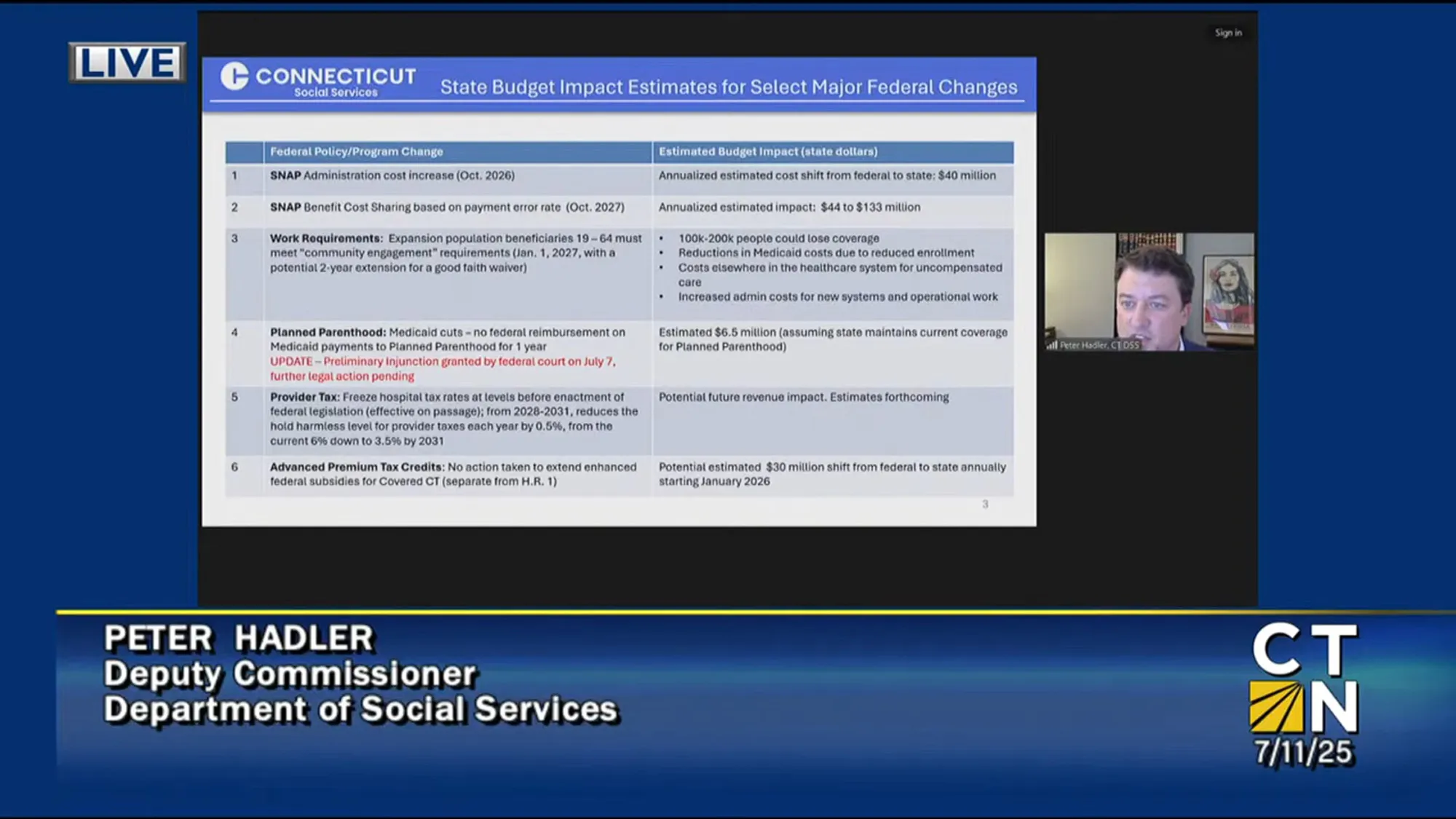Lamont Offers Unemployment Boost to 38,000 Connecticut Residents

Audio By Carbonatix

Connecticut Department of Labor. CTNewsJunkie.com file photo
The governor’s executive order will help residents who missed out on the Lost Wages Assistance Program because they didn’t meet the minimum threshold.
By Hugh McQuaid, CTNewsJunkie.com
Gov. Ned Lamont’s administration plans to help about 38,000 unemployed Connecticut residents qualify for federal assistance by spending about $7.5 million to nudge them over a qualification threshold.
Lamont and Labor Department officials announced a new executive order Friday during a televised news conference. The order is designed to help thousands of residents qualify for the federal Lost Wages Assistance Program, which used disaster relief funds tied to the pandemic to supplement unemployment benefits for six weeks between July and September. About 160,000 residents already received benefits from the program.
The governor tried to describe the residents who may have missed out on the Lost Wages Assistance Program due to the benefit threshold.
“They’re often single parents, single moms. Maybe working two or three jobs in and around the minimum wage. Maybe at fast food. Maybe at the restaurant. Maybe home health care. She loses one or two of those extra jobs, she’s now down to less than $100 dollars a week and she was frozen out of any unemployment support and that was wrong,” he said.
The executive order will retroactively extend assistance to another 38,000 residents by helping them meet the $100 a week minimum unemployment benefit they had to already be receiving to qualify for the extra money. On the state level, this means an investment of $7.5 million from the state Unemployment Trust Fund to unlock about $55 million in federal funding to go directly to struggling residents.
The move makes a significant financial difference for the newly-qualified residents. It will mean the state will pay an average of an additional $43 a week, which in turn will trigger an additional $300 a week from the federal government. Over the six-week period, that can add up to $1,800 more in federal assistance for the working poor who have lost jobs.
“It’s good news for our residents. It’s good for our economy. It bolsters economic activity,” Labor Commissioner Kurt Westby said. The additional funds will “help support residents when they need it most.”
Lamont acknowledged that the pandemic has wreaked havoc on family budgets across Connecticut. He said he hoped the additional piece of assistance would help some families while the nation waits for Congress to pass additional pandemic relief programs.
The state has been approved to borrow more than $800 million to keep the Unemployment Trust Fund solvent. According to Westby, the state has drawn down about $419 million so far.
On Thursday, House Republican Leader Vincent Candelora called on Lamont to use remaining federal assistance funds to help pay down that debt which will likely fall on state businesses to repay. According to the House Republican Caucus, 15 states have used federal assistance money to replenish unemployment funds and shield businesses from increases in the unemployment tax.
Candelora said that Friday’s executive order, while good for workers, represents an additional strain on Connecticut businesses.
“The $7.5 million that the governor is leveraging is actually going to have to be paid back by businesses,” he said. “Every proposal that we’ve seen come out of the administration is continuing to leverage private sector dollars that aren’t there. … We’ve got to start coming up with some proposals to help bail them out.”
The Lamont administration is hoping the federal government opts to turn the loans into grants and the governor said Friday that he has other plans for the roughly $200 million in remaining CARES Act funds that expire at the end of the month.
“Are we going to pour state taxpayer dollars into the unemployment fund now? No. Am I going to take money away from testing and schools and pour it into the unemployment fund at this point? I’m not thinking about doing that. Maybe if on Dec. 31 we had a little bit left over, but that’s not our plan. We have better uses for that money, really related to public health,” he said.
Candelora said the federal government is unlikely to forgive the loans, especially when other states have already spent over $5 billion of their CARES Act dollars to prop up their unemployment funds. Without assistance from the state, Candelora said Connecticut businesses may spend years trying to recover.
“We borrowed $800 million 10 years ago in the last recession. It took businesses seven years to pay that back. We’re poised to be at that same level by the end of the year,” he said. “Any chance we could offset this liability would go a long way to help our economy recover.”
Republished with permission from CTNewsJunkie.com, all rights reserved.
Like what you see here? Click here to subscribe to We-Ha’s newsletter so you’ll always be in the know about what’s happening in West Hartford! Click the blue button below to become a supporter of We-Ha.com and our efforts to continue producing quality journalism.



